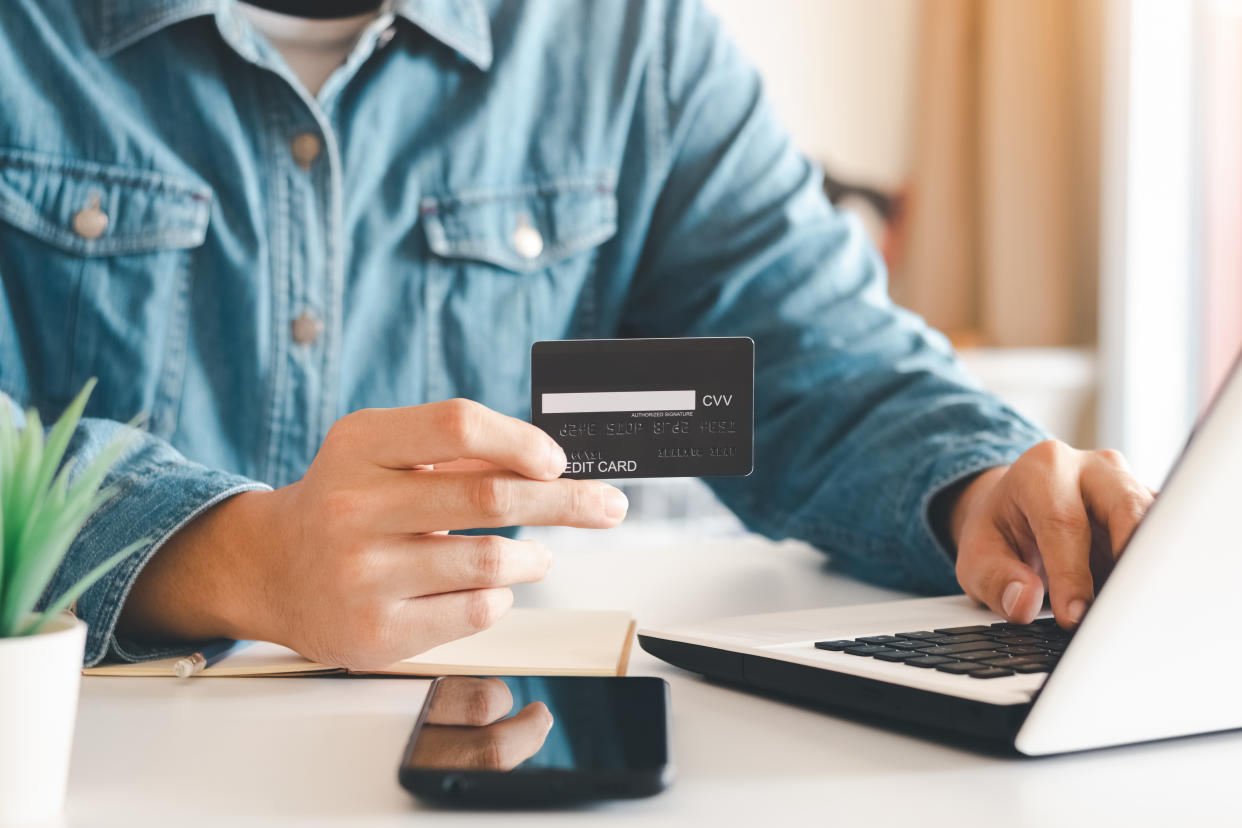Some of the products written about here are offered in affiliation with AOL. We may receive a share from purchases made via links on this page. Pricing and availability are subject to change.
There was a time in the not-too-distant past when online banking was a scary prospect for a lot of people who weren’t born into a digital world. But, like a lot of old habits, the pandemic changed that. Before Covid, two-thirds of Americans over age 50 were hesitant to bank online, according to Forbes Advisor. By April 2020, 77% of people 60 and up had conducted a financial transaction online.
The trend is growing. A recent study revealed 88% of Baby Boomers have used online banking in the past year. With Covid still lingering, it begs the question: are seniors using online banking because they have to or because they’re legitimately comfortable with it?
While we wait for those survey results to roll in, you can rest assured knowing that online banking is safe. Banks go above and beyond with security measures, and you can do your part at home, too. Norton Security Online helps keep your personal information private, protecting you and your finances from hackers, scammers and cyber crimes in real time.
Try Norton Security Online free for 30 days*
Norton Security Online uses some serious security technology: it’s actually backed by the world's largest civilian cyber threat intelligence network. And that technology is on alert 24/7, running quietly in the background of your PC.
Here’s are some of the most common online banking security tools
Ever see the security guards on duty at your local bank branch? Banks mean business when it comes to security measures, and online banking is no different. Actually, it is — they do more to keep your financial transactions safe online. Here are five of their main tools:
Firewalls: Online banks use special networks called firewalls that prevent unauthorized traffic from breaking through and only allow authorized activity. Many companies use firewalls, as it’s a first line of defense against malicious actors.
Encryption: This rather ominous sounding word actually means great things for you as an online banker. Encryption basically means that data is scrambled so only the parties involved in the transaction — you and the bank — can understand it. The bank has the key, however, that unscrambles the information flawlessly on their end. Hackers can’t read it.
Multi-Factor Authentication: This is one of the most common security measures taken by online banks. It blocks fakers from accessing your account by requiring you to prove your identity in two or more ways before you can access your account. Most commonly, you’ll input your password, then receive a text on your phone asking you to validate yourself. Sometimes biometrics are involved too, most often in the form of fingerprint or face ID.
Cookies: Cookies are one or several small pieces of data that identify your computer to a website with a unique code. Many websites, including online banks, place browser cookies (they’re harmless) on your computer after the first time you visit, so the site can remember you and easily authenticate you when you visit again using the same device. If you log into your online bank via a new device, the bank will likely ask you for identifying information again (those security questions you answered when you signed up) because it doesn’t remember you, but it will leave your device with a cookie so it recognizes you next time.
Account Monitoring and Alerts: Online banks keep a watchful eye on your account activity and will send you real-time text alerts (you have to opt in) of things like withdrawals and transfers, so you can keep track of things. But sometimes a bank will specifically send a fraud alert when it recognizes suspicious activity (this could include a big-ticket purchase, an overseas transaction or just an erratic pattern of spending). When this happens, the bank will block the transaction (even if it was you), and the alert will ask whether you recognize it. If you confirm it was you, the bank will allow you to perform the transaction again, successfully. But if you confirm it was fraud, the bank will instantly deactivate your card and issue you a new one with a new account number.
Privacy Policies: Online banks have strict privacy policies in place that are bound by law, and employees are trained to keep your confidentiality paramount. And no, they cannot see your passwords — however you should still be changing those passwords frequently for your own safety.
Try Norton Security Online free for 30 days*
Source: Read Full Article


